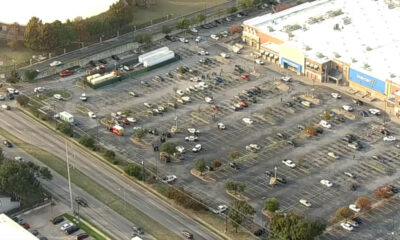Reviews
The Hidden Risks of Underinvesting in Commercial Equipment

Underinvesting in commercial equipment might seem like an easy way to save money. But it can lead to bigger costs, downtime, and frustrated customers.
It’s not just about having the latest gadgets or tools. It’s about protecting your business from expensive repairs and lost opportunities.
This is especially important for startups and franchises with tight budgets. Neglecting equipment upgrades often has ripple effects that hurt growth over time. So, if you want to protect your investment, stick around as we uncover practical tips you need now.
How Equipment Downtime Impacts Revenue
When equipment fails, everything stops. Delays result in lost sales, missed deadlines, and dissatisfied customers. This is especially detrimental in industries such as food service or manufacturing, where timing is crucial.
For instance, choosing quality commercial ovens is essential to prevent costly breakdowns during peak hours. Cheap alternatives may save money upfront, but lead to frequent interruptions later.
The financial loss isn’t just the repair bill; it’s also wasted labor and reduced customer satisfaction. Every hour of downtime chips away at your bottom line, which make it an issue many businesses underestimate until it’s too late.
The Long-Term Cost of Frequent Repairs
Cheap equipment often comes with a hidden price: constant maintenance. Over time, repair costs can surpass what you would’ve spent on higher-quality options initially.
These recurring expenses also drain resources that could go toward growth or innovation. Beyond financial considerations, the interruptions caused by repairs disrupt operations and reduce efficiency.
For instance, businesses reliant on critical tools like HVAC systems or forklifts experience delays every time repairs are needed. When breakdowns become routine, it’s not just frustrating; they also slow everything down and add stress to daily operations. Investing in durable equipment prevents this costly cycle before it begins.
Why Outdated Technology Reduces Productivity
Old equipment often struggles to keep up with modern demands. Slower speeds, limited features, and higher energy consumption create bottlenecks that frustrate employees and waste time.
For instance, outdated POS systems can slow down transactions in retail or food service environments. Employees work harder to overcome inefficiencies, but the delays still affect output.
These small productivity losses accumulate over time, negatively impacting overall performance and customer satisfaction. Upgrading to current technology ensures smoother operations and keeps your team focused on delivering results instead of managing preventable obstacles caused by aging tools or systems.
How Poor Equipment Hurts Your Reputation
Equipment failures often result in missed promises, such as delayed orders or subpar service. Customers notice when things go wrong, and their trust is compromised. Since reputation challenges are seen as a priority by 87% of decision-makers, this cannot be ignored.
For example, restaurants using faulty refrigerators risk serving spoiled food, which instantly damages their credibility. Even small equipment issues leave a lasting negative impression on clients who expect professionalism.
Customers value reliability just as much as product quality or service speed. Consistent equipment performance reinforces your dependability and keeps them coming back. Skimping on tools today could cost you loyal customers tomorrow, so it’s an expense far greater than investing in dependable gear upfront.
Hidden Safety Hazards from Old or Inefficient Tools
Worn-out equipment isn’t just inconvenient; it’s often unsafe. Dull blades, frayed wires, or failing machinery put employees and customers at risk of injury.
For instance, outdated forklifts may have faulty brakes, which increase the risk of accidents in warehouses. Ignoring these risks can lead to costly liability and it also endangers lives.
Regular maintenance can only do so much for aging tools nearing their limit. Investing in modern, efficient equipment ensures safety standards are met while reducing the potential for workplace hazards. It’s not just a wise financial choice; it’s a responsibility every business should prioritize.
Balancing Budgets While Investing in Quality Gear
Investing in equipment doesn’t have to break the bank. Consider options like leasing or financing to spread the costs over time without straining your budget.
Prioritize high-use tools first, ensuring critical operations stay reliable. For instance, focus on durable essentials like refrigeration units in food service or power tools in construction before expanding investments elsewhere.
Regularly assess what needs replacement versus repair; prolonging outdated gear often ends up being more expensive in the long term. By planning upgrades strategically and taking advantage of payment plans, you can strike a balance between affordability and quality, while maintaining smooth and efficient operations.
The Last Word
In short, underinvesting in commercial equipment creates avoidable risks. From safety concerns to lost revenue, the hidden costs can quickly outweigh initial savings.
Invest smartly and prioritize quality tools to protect your business. Reliable equipment ensures smoother operations, happier customers, and long-term growth, both of which are benefits that far surpass short-term cost-cutting measures.

-

 Legal6 days ago
Legal6 days agoMichigan man JD Vance sentenced to 2 years for threatening Trump and JD Vance
-

 Politics1 week ago
Politics1 week agoU.S. to designate Maduro-linked Cartel de los Soles as terrorist organization
-

 Health7 days ago
Health7 days agoCambodia reports fatal H5N1 bird flu case in 22-year-old man
-

 World4 days ago
World4 days agoHurricane Melissa registered 252 mph wind gust, breaking global record
-

 Legal4 days ago
Legal4 days agoWoman in critical condition after being set on fire on Chicago train
-

 Politics7 days ago
Politics7 days agoEpstein survivors release PSA calling on Congress to release all files
-

 Legal4 days ago
Legal4 days ago1 dead, 2 injured in shooting at Dallas Walmart parking lot
-

 Legal3 days ago
Legal3 days agoSuspect in San Diego stabbing shot by authorities after fleeing into Mexico




